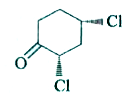Which of the following gland do not have duct?
Salivary gland
Mammary gland
Intestinal gland
Adrenal gland
The correct Answer is:D
To determine which of the following glands do not have ducts, we need to classify the glands mentioned in the options based on whether they are exocrine or endocrine.
1. Understand the Types of Glands:
- Glands are classified into two main types: exocrine glands and endocrine glands.
- Exocrine glands secrete their products through ducts to an external surface or into a cavity.
- Endocrine glands are ductless and release their hormones directly into the bloodstream.
2. Analyze the Given Options:
- The options provided are:
- A. Salivary glands
- B. Mammary glands
- C. Intestinal glands
- D. Adrenal gland
3. Evaluate Each Option:
- Salivary Glands: These are exocrine glands that secrete saliva through ducts into the mouth. (Exocrine)
- Mammary Glands: These are also exocrine glands that secrete milk through ducts. (Exocrine)
- Intestinal Glands: These glands secrete intestinal juices through ducts into the intestine. (Exocrine)
- Adrenal Gland: This gland secretes hormones like adrenaline directly into the bloodstream without using ducts. (Endocrine)
4. Identify the Correct Answer:
- Among the options, the Adrenal gland is the only gland that does not have ducts and is classified as an endocrine gland.
Final Answer:
The gland that does not have a duct is the Adrenal gland.
---
- Glands are classified into two main types: exocrine glands and endocrine glands.
- Exocrine glands secrete their products through ducts to an external surface or into a cavity.
- Endocrine glands are ductless and release their hormones directly into the bloodstream.
- The options provided are:
- A. Salivary glands
- B. Mammary glands
- C. Intestinal glands
- D. Adrenal gland
- Salivary Glands: These are exocrine glands that secrete saliva through ducts into the mouth. (Exocrine)
- Mammary Glands: These are also exocrine glands that secrete milk through ducts. (Exocrine)
- Intestinal Glands: These glands secrete intestinal juices through ducts into the intestine. (Exocrine)
- Adrenal Gland: This gland secretes hormones like adrenaline directly into the bloodstream without using ducts. (Endocrine)
- Among the options, the Adrenal gland is the only gland that does not have ducts and is classified as an endocrine gland.
The gland that does not have a duct is the Adrenal gland.
Topper's Solved these Questions
- STRUCTURAL ORGANISATION IN ANIMALS ( ANIMAL TISSUES ) BOOK - AAKASH INSTITUTE ENGLISHCHAPTER - STRUCTURAL ORGANISATION IN ANIMALS ( ANIMAL TISSUES ) EXERCISE - Assignment (Section-A)
35 Videos
- STRUCTURAL ORGANISATION IN ANIMALS ( ANIMAL TISSUES ) BOOK - AAKASH INSTITUTE ENGLISHCHAPTER - STRUCTURAL ORGANISATION IN ANIMALS ( ANIMAL TISSUES ) EXERCISE - Assignment (Section-B)
13 Videos
- STRUCTURAL ORGANISATION IN ANIMALS ( ANIMAL TISSUES ) BOOK - AAKASH INSTITUTE ENGLISHCHAPTER - STRUCTURAL ORGANISATION IN ANIMALS ( ANIMAL TISSUES ) EXERCISE - Try Yourself
34 Videos
- STRATEGIES FOR ENHANCEMENT IN FOOD PRODUCTIONBOOK - AAKASH INSTITUTE ENGLISHCHAPTER - STRATEGIES FOR ENHANCEMENT IN FOOD PRODUCTIONEXERCISE - Assignment (Section - D)
10 Videos
- STRUCTURAL ORGANISATION IN ANIMALS (CONTD . . .) (ANIMAL MORPHOLOGY)BOOK - AAKASH INSTITUTE ENGLISHCHAPTER - STRUCTURAL ORGANISATION IN ANIMALS (CONTD . . .) (ANIMAL MORPHOLOGY)EXERCISE - Assignment (Section-D)
10 Videos
Similar Questions
Knowledge Check
Which of the following compounds do not have the plane of symmetry?
A B
B C
C D
D
Which of the following groups do not have the antennae?
AcrustaceaBmyriapodaCinsectaDarachnidaWhich of the following protists do not have multicellular representatives?
AChrysophytaBPhaeophytaCRhodophytaDAll of the above include multicellular representatives
Which of the following compound do not have white colour in the form of ppt ?
View SolutionWhich of the following do not have tendency to act as ligands during complex formation?
View SolutionWhich of the following glands in our body have its cells arranged in the form of cords ?
View SolutionWhich of the following set do not have sp3d hybridization :-
View SolutionWhich of the following set do not have sp3d hybridization
View Solution
